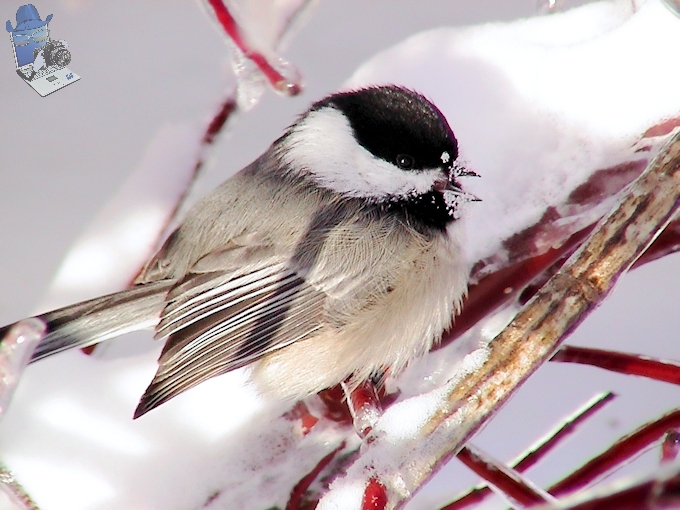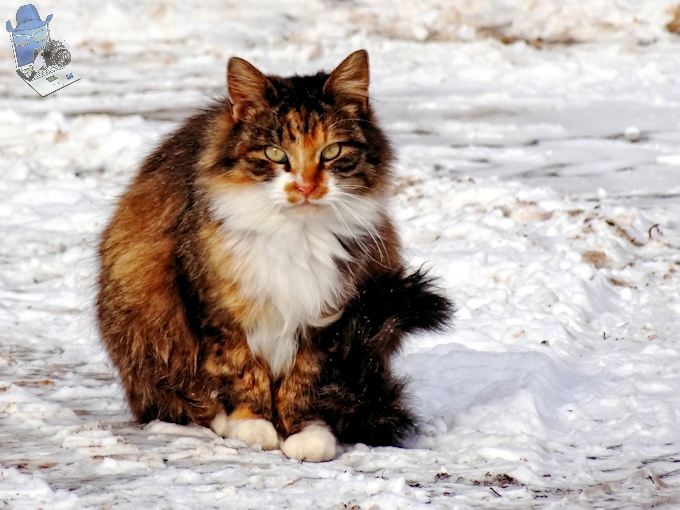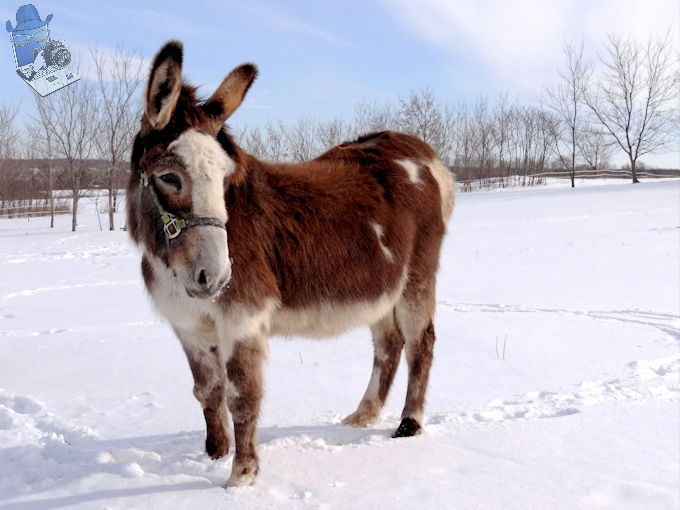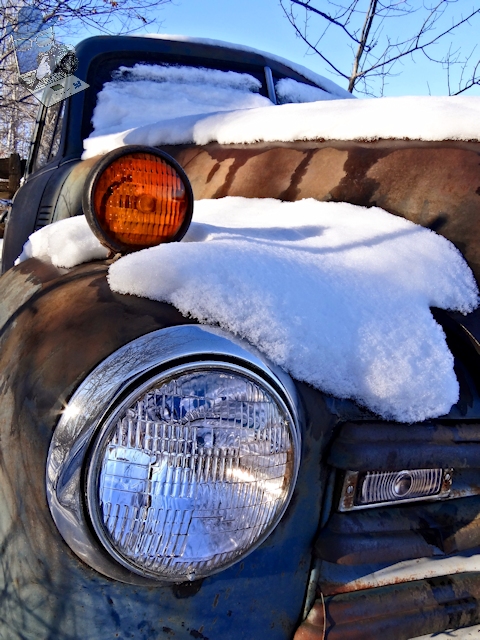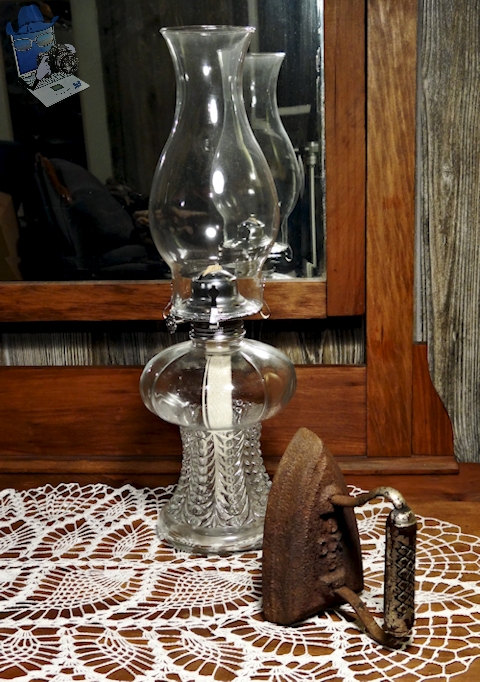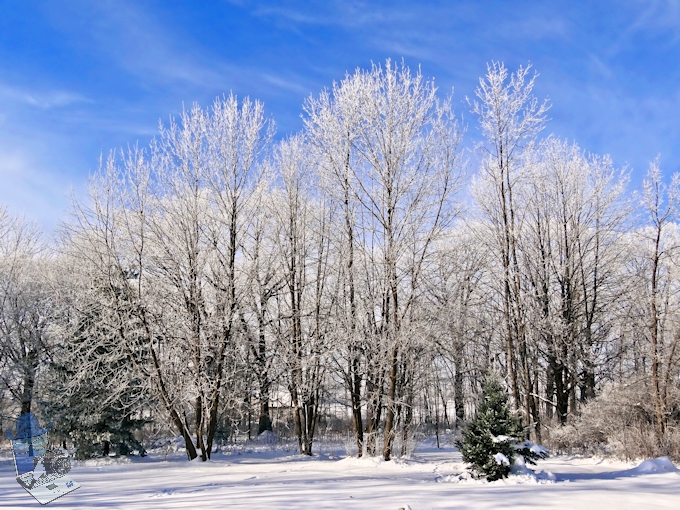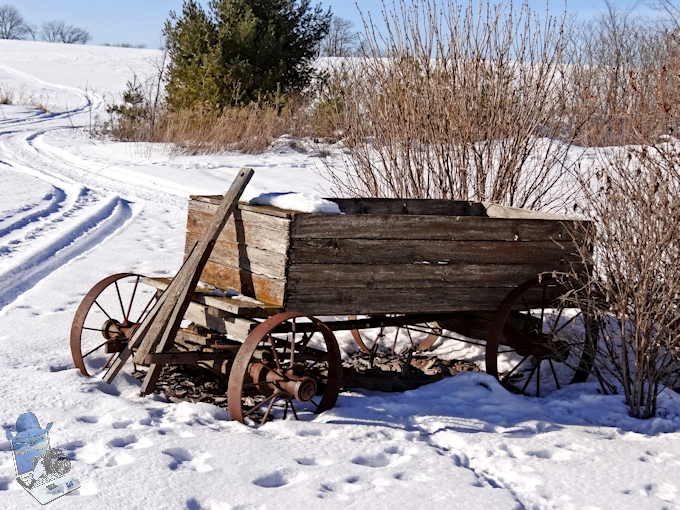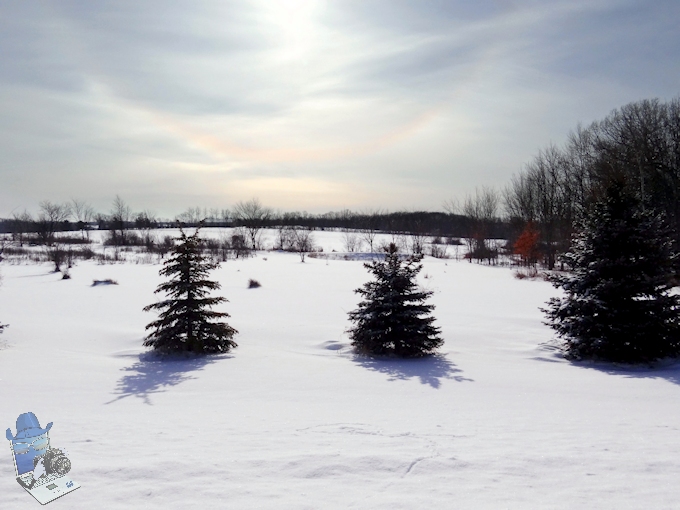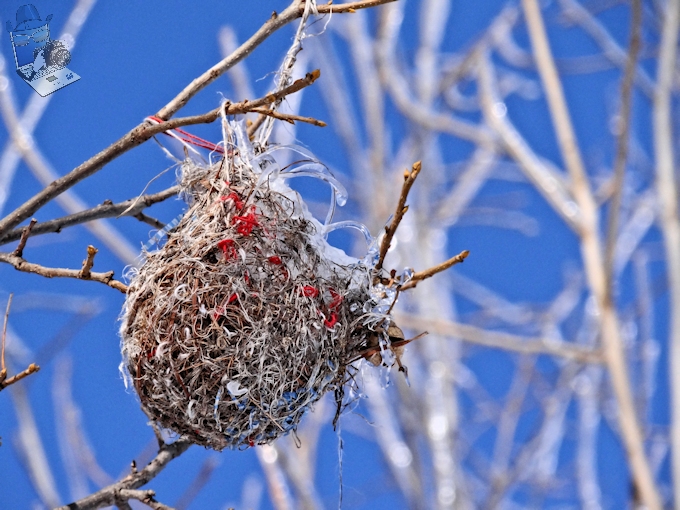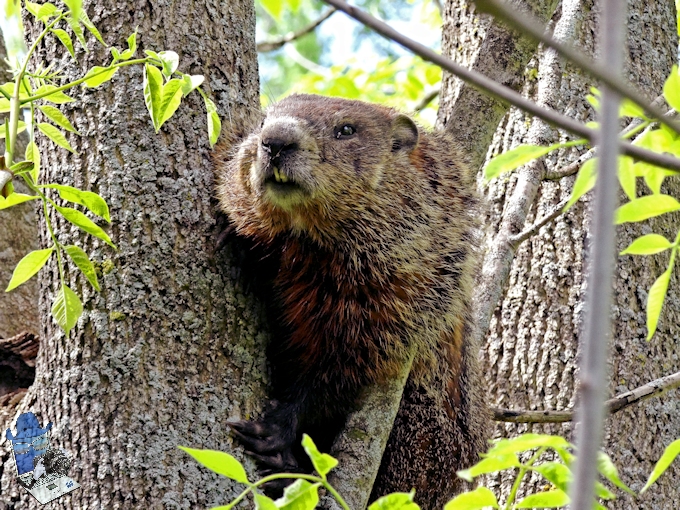The chickadees are the only ones that sound so cheerful after the snowstorm except maybe for some happy individuals who earn income from clearing driveways and sidewalks.
The Black-capped Chickadee, a bird almost universally considered “cute” thanks to its oversized round head, tiny body, and curiosity about everything, including humans. It is notable for its capacity to lower its body temperature during cold winter nights, its good spatial memory to relocate the caches where it stores food, and its boldness near humans (they can feed from the hand).
The Black-capped Chickadee is the state bird of both Maine and Massachusetts.
Cheerful Chickadee


